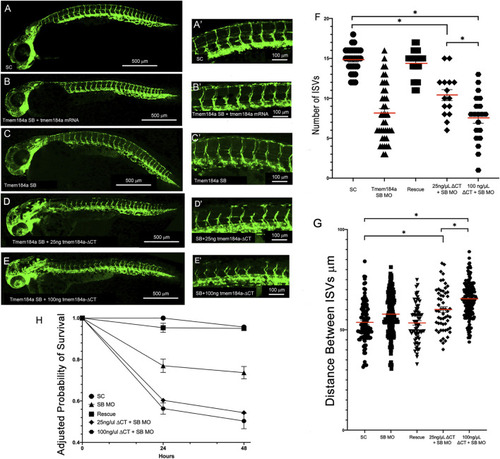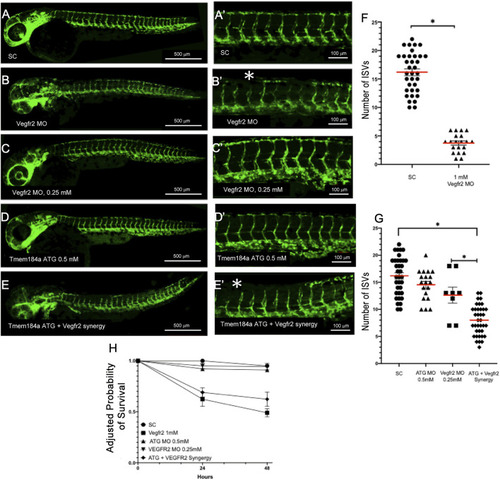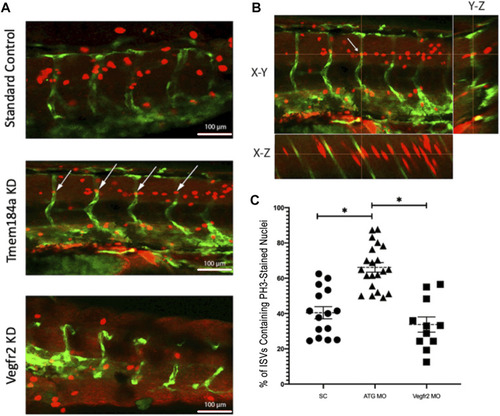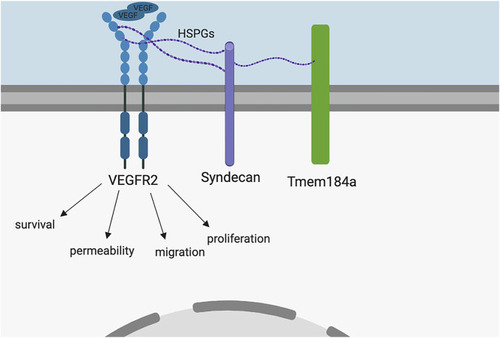- Title
-
Involvement of transmembrane protein 184a during angiogenesis in zebrafish embryos
- Authors
- Field, C.J., Perez, A.M., Samet, T., Ricles, V., Iovine, M.K., Lowe-Krentz, L.J.
- Source
- Full text @ Front. Physiol.
|
Tmem184a MO Treatment Results in Tmem184a Protein Decrease. Embryos were injected with SC or Tmem184a ATG MO and harvested for western blotting. Three identically treated embryos constituted a single sample. One of three identical experiments is shown with the graph summarizing the data. |
|
Tmem184a KD Results in Decreased Number of Intact Intersegmental Vessels. PHENOTYPE:
|
|
Removing HS binding domains negatively affects Angiogenesis. Embryos were injected with |
|
|
|
Tmem184a and Vegfr2 Function Synergistically to Modulate Angiogenesis. PHENOTYPE:
|
|
Tmem184a KD Causes an Increase in Cell Proliferation. PHENOTYPE:
|
|
KD of Tmem184a results in decreased levels of VE-cadherin. Embryos were injected with control or ATG-MO for Tmem184a, sorted for GFP positive and fixed at 43 hpf. Embryos were stained with the Anti-zebrafish VE-cadherin antibody as described in Methods and imaged on the Zeiss LSM 880 confocal microscope at 20x. |
|
Model. Based on the literature, we hypothesized HS interaction with Tmem184a is involved in modulation of Vegfr2 signal transduction. VEGF binding to Vegfr2 induces a signaling cascade responsible for the EC survival, permeability, migration, and proliferation necessary for angiogenesis. The present study provides evidence supporting this hypothesis. |

ZFIN is incorporating published figure images and captions as part of an ongoing project. Figures from some publications have not yet been curated, or are not available for display because of copyright restrictions. PHENOTYPE:
|








